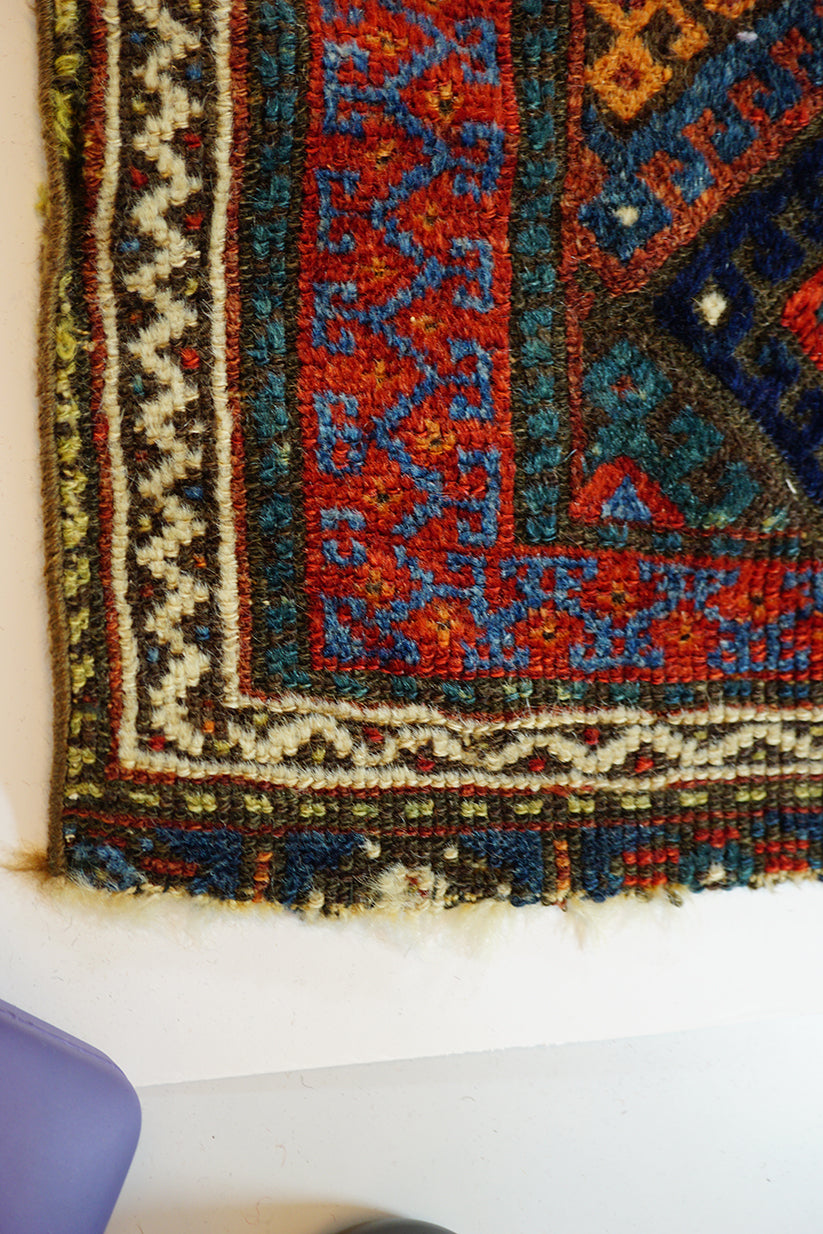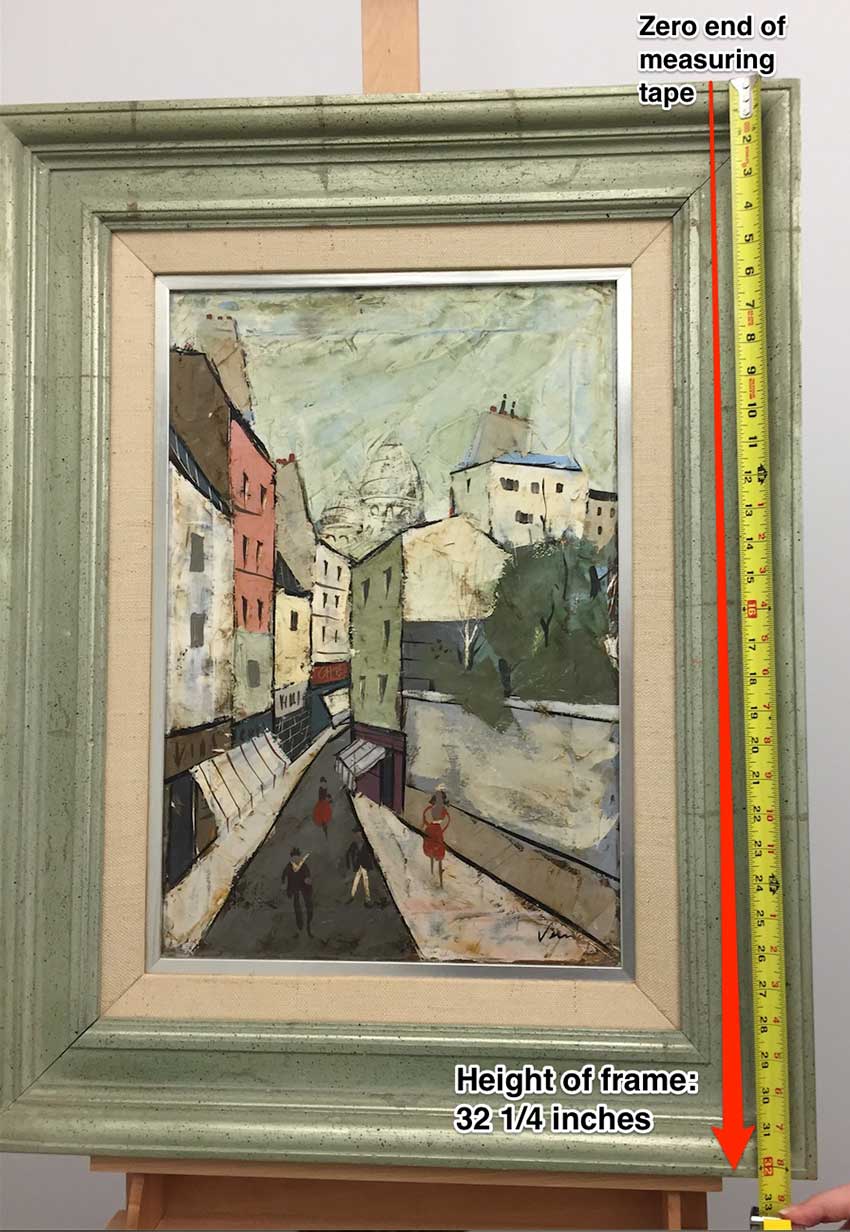
A Lee denim jacket signed by Andy Warhol, Jean-Michael Basquiat and Robert Rauschenberg sold for $4,250 plus the buyer’s premium in December 2011. Image courtesy of Heritage Auctions and LiveAuctioneers
Denim has evolved by light years since its humble origins as the poor man’s workwear. Over time, Hollywood rebels and rugged characters of the Old West have imbued the cloth with an air of glamour, ultimately elevating vintage denim clothing to the status of “collectible.” But not all denim is the same, since the product it comprises can range from standard blue jeans and overalls to bags, caps and even bedspreads.

A complete circa-1940 denim twill conductor’s uniform for the Norfolk Western Line railroad achieved $2,250 plus the buyer’s premium in December 2015. Image courtesy of Dan Morphy Auctions and LiveAuctioneers
Denim did not actually originate with the 49ers, i.e., miners attracted by the 19th century Gold Rush in California. It was first woven as a twill fabric in Nimes, France in the late 15th century. Traders labeled the cloth as de Nimes (from “Nimes”), a practice that likely gave rise to the word “denim.”
The French fabric was favored for work clothing such as overalls, vests, jackets, and uniforms because it could withstand heavy daily use for a longer period than plain woven cotton cloth. Over many decades however, the now-classic denim look, featuring an outer finish in indigo blue with a white interior, become a staple of fashionable outerwear and accessories.

Found unworn in storage, this vintage 1930 denim jacket with the classic Levi Strauss & Co., leather label sold for $11,000 plus the buyer’s premium in October 2019. Image courtesy of Daniel Buck Auctions, Inc., and LiveAuctioneers
A similar fabric to French denim was woven in the late 15th century in Genoa, Italy, but it was considered a corduroy weave rather than a twill. As with denim, the cloth was reserved for work outfits – in this case, for Italian sailors, because it maintained its integrity whether it was wet or dry. The French word for Genoa was “Genes,” which may have morphed into the word “jeans.” A French military uniform made from “bleu de Genes” fabric in 1795 is the first known use of the term “blue jeans,” which is now relegated to pants only.

A pair of circa-1940s new-old stock Lee Riders blue jeans achieved $9,600 plus the buyer’s premium in April 2019. Image courtesy of Daniel Buck Auctions, Inc., and LiveAuctioneers
A third woven twill fabric of note emerged near Mumbai (formerly Bombay), India in the 17th century. Described as “cheap, coarse, thick cotton cloth,” it was invented by the weavers of Dongri and sold under the name “dungri” Transformed into work-ready outerwear such as smocks and bib-and-brace overalls by manufacturers in England and Europe, the cloth eventually became known as “dungarees.”
Durable as these woven types of cloth were, certain areas of garments made from them wore out faster than others, especially the pocket corners, the seams and also the bottom of the button fly on men’s pants. In 1969, Jacob Davis, a tailor working in Reno, Nevada, came up with a solution. Davis routinely bought bolts of denim and canvas material from Levi Strauss, a dry goods proprietor in San Francisco, to make and sell sturdy work clothing he reinforced with copper rivets in the areas that endured the most punishment.
According to legend, Davis wrote to Strauss in 1872, suggesting a partnership. Strauss agreed, and in 1873, US patent No. 139,121 was issued for an “Improvement in Fastening Pocket-Openings.” That same year, Davis added double orange thread stitching on the back pockets of the pants. The distinctive decoration, united with the copper rivets, marked the arrival of an American icon: Levi’s.

This circa-1960 pair of never-worn Levi 505 jeans, with sales tags attached, earned $1,000 plus the buyer’s premium in November 2020. Image courtesy of Flannery’s Estate Services and LiveAuctioneers
Levi’s indigo blue jeans, the standard from which modern blue jeans evolved, starts with the patented copper-riveted version of 1873, which had two front pockets decorated with double-stitched orange thread and one rear pocket on the right side. The men’s style had a button fly in front and the women’s style placed the fly on the left side, following the company’s now-trademarked “arcuate” (arc-like) design.”

‘Untitled (Jeans),’ an ink-on-denim drawing by Keith Haring, achieved $10,000 plus the buyer’s premium in June 2021. Image courtesy of Rago Arts and Auction Center and LiveAuctioneers.
By 1890, the jeans featured the legendary five-pocket design, with two in the front, two in the back and a fifth small front pocket, ideal for a pocket watch. The leather tag showing two horses pulling the jeans apart, called “The Two Horse label,” first appeared in 1886, but sometime in the late 1930s, it acquired a three-digit number on the lower left side that verified the style and date of manufacture.
The company began branding their jeans with a small red embroidered cloth tag in 1936. It introduced a denim shirt two years later and launched a denim line exclusively for women in 1949.

The upper parts of two pairs of circa-1880s Levi’s jeans earned $8,250 plus the buyer’s premium in August 2021. Image courtesy of Holabird Western Americana Collections and LiveAuctioneers
Levi Strauss & Co., remains a cultural touchstone in denim wear, with consistently high auction prices for its early productions, no matter the condition. In 2018, a pair of denim jeans manufactured in 1893 sold for nearly $100,000. “It’s somebody who loves old Levi’s,” said Daniel Buck Soules, from Daniel Buck Auctions in Maine.

A door push promoting Can’t Bust ‘Em denim overalls sold for $325 plus the buyer’s premium in May 2016. Image courtesy of North American Auction Company and LiveAuctioneers
Other well-known brands made their debut around the turn of the 20th century, capitalizing on the success of Levi Strauss & Co. For example, Osh Kosh B’Gosh got its start in 1895; Wrangler jeans in 1904; and Lee denim overalls and shirts in 1911. Lee acquired an early brand of denim overall called Can’t Bust ‘Em that was targeted at gold miners, but lacked rivets and reinforcements. Examples of the Can’t Bust ‘Em denim brand dating to the American gold-mining period appear at auction infrequently and are regarded by some as long-term investments.

A Levi Strauss cowboy-themed display fitted with an oversize pair of jeans attained $2,500 plus the buyer’s premium in March 2012. Image courtesy of Showtime Auction Services and LiveAuctioneers
Movies set in the Old West sparked fresh interest in denim clothing that led to another enduring fashion favorite: the denim jacket, which was introduced in the early 1920s. By the 1950s, denim became associated with movie rebels Marlon Brando and James Dean, and by the late 20th century, denim had shed its workaday past and gone decidedly upmarket. Fashion designers Gloria Vanderbilt, Ralph Lauren, Gucci and others produced jeans, bags and other coveted pieces in the resilient fabric, carving out a niche of their own at auction. A vintage woman’s Chanel denim jacket sold recently for $2,200 – not an unusual occurrence for designer denim.

A Louis Vuitton denim monogram handbag achieved $19,000 plus the buyer’s premium in March 2022. Image courtesy of Bidhaus and LiveAuctioneers
Denim appears in many different forms from just as many different companies. Manufacturing details such as buttons, pockets, fly styles (zipper or button) and color variations can affect a piece’s value. A good place to start researching denim brands is VintageWorkWear.com and the collector’s guide to Levi’s at heddels.com.

This Chanel long-sleeved denim jacket sold for $6,300 plus the buyer’s premium in October 2021. Image courtesy of Mynt Auctions and LiveAuctioneers
Denim and its cousins could have disappeared right along with the shattered dreams of those miners who did not strike it rich in the Gold Rush days, but its rugged durability spared it from that fate. Pop culture images of cowboys and societal mavericks clad in denim made the fabric seem cool, and when top fashion designers embraced denim, it rose in status yet again. Today, vintage denim doesn’t just deliver a classic look; it can also fit nicely into a collection of other investment-grade pop-culture collectibles.




















































